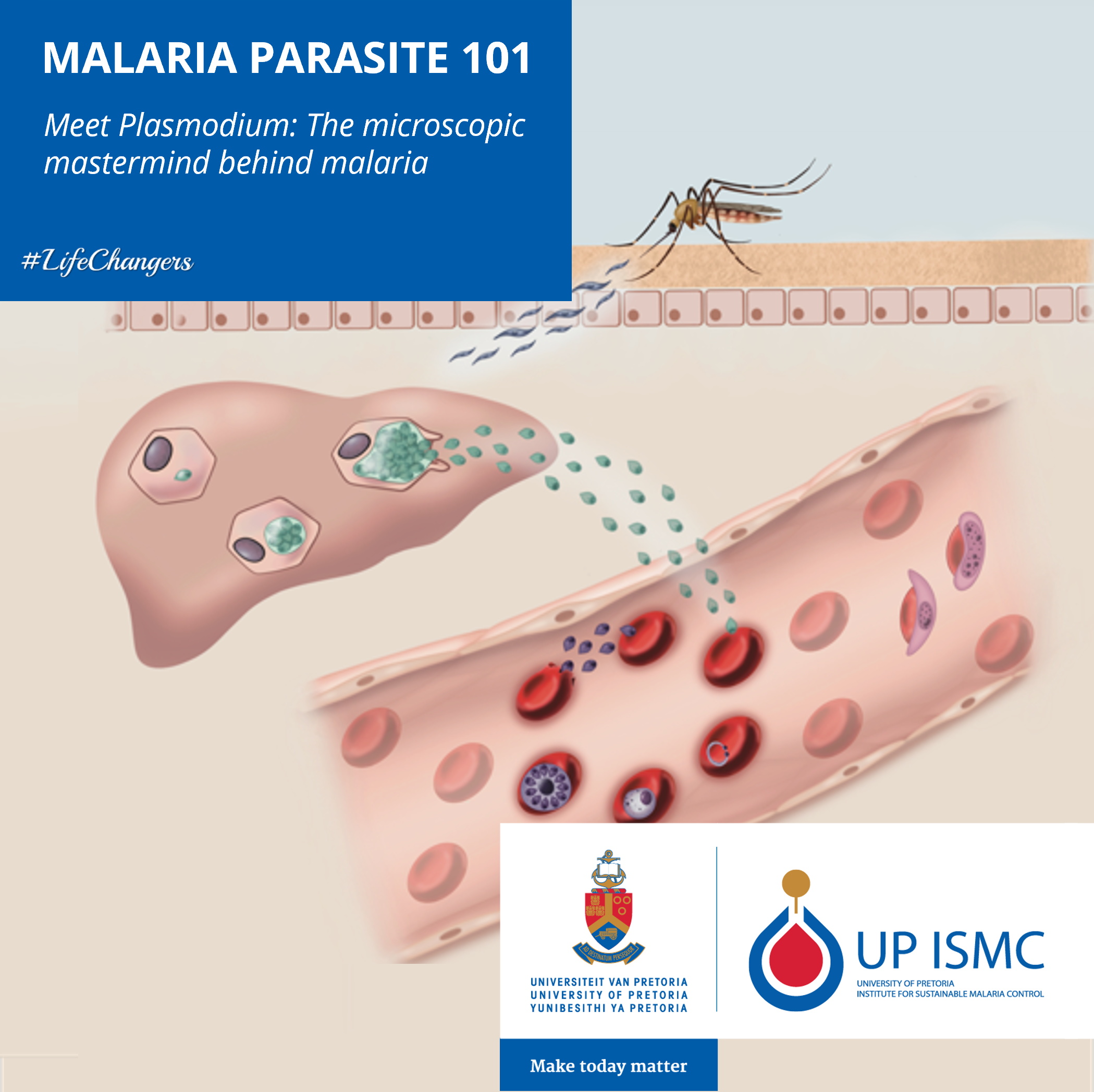| #1 |
 |
Ever wondered what really causes malaria? Meet Plasmodium, the microscopic parasite behind one of the world’s deadliest diseases. Not a virus, not a bacterium, but a master of survival that requires both humans and mosquitoes to thrive. From invading humans to surviving mosquitoes, its life cycle is a marvel of adaptation. Click the image to learn why this microscopic parasite has challenged humanity for centuries, and how scientists are targeting this tiny powerhouse to stop malaria in its tracks.
Image: The asexual part of the malaria parasite's life cycle simplifed - Credit: Natanya Venter (PhD candidate, BGM, UP)
|
|
16 October 2025
Click the image to read the article.
|
| |
|
|
|
|
| #2 |
 |
Did you know malaria parasites hide in your liver long before you feel sick? Plasmodium sporozoites multiply silently, setting the stage for illness to strike later. Click the image to discover the parasite’s secret hiding place and learn how scientists are using this knowledge to stop malaria in its tracks before symptoms appear through the use of liver-stage drugs and prophylaxis. Early testing and treatment could prevent weeks of infection, and even relapses.
Image: A digital illustration showing microscopic Plasmodium sporozoites (elongated forms) invading human liver cells (hepatocytes) - Credit: ChatGPT (OpenAI)
|
|
21 October 2025
Click the image to read the article.
|
| |
|
|
|
|
| #3 |
 |
Malaria’s symptoms start inside your red blood cells (RBCs)! Merozoites invade the RBCs, they multiply, and finally the RBCs burst causing fever, chills, fatigue, anaemia and more. Blood-stage antimalarials not only relieve symptoms but can also block disease transmission. Click the image to continue with the parasite’s story and learn what makes you sick, why and when. But the symptoms don’t just stop there…
Image: Microscopic images of the asexual Plasmodium parasite blood stages (purple structures within the pink RBCs); ring stage (top row), trophozoite stage (middle row), and schizont stage (bottom row) - Credit: Henrico Langeveld (PhD candidate, BGM, UP)
|
|
24 October 2025
Click the image to read the article.
|
| |
|
|
|
|
| #4 |
 |
Some malaria infections are more dangerous than others and can escalate quickly, specifically Plasmodium falciparum. This specific parasite can block blood vessels, harm organs, triggering severe complications like cerebral malaria and anaemia, and ultimately threaten lives, especially in children and pregnant women. Rapid treatment with potent drugs can reduce parasite loads and prevent death. Click the image to understand why early diagnosis and rapid treatment of malaria infections are so important.
Image: Infographic icon depicting hospitalisation due to severe malaria, resulting from late detection and slow treatment - Source: UP ISMC.
|
|
29 October 2025
Click the image to read the article.
|
| |
|
|
|
|
| #5 |
 |
Not all Plasmodium parasite stages make you sick. Some are quietly ‘planning’ the next infection, preparing for the next mosquito bite. These stages are called gametocytes; the sexual form of the parasite that mosquitoes pick up when they take a blood meal. Inside the mosquito, the life cycle continues. This is an important point in the malaria life cycle for effective control interventions, such as transmission-blocking. Click the image to learn about the sexual stage of the parasite.
Image: Microscopic image of the sexual Plasmodium falciparum gametocytes (elongated structures); two male gametocytes (left), and one female gametocyte (right).- Credit: Dr Dina Coertzen (Lecturer, BGM, UP)
|
|
3 November 2025
Click the image to read the article.
|
| |
|
|
|
|
| #6 |
 |
The malaria parasite life cycle doesn’t end in humans, it continues inside the Anopheles mosquito. The mosquito isn’t just a bloodsucker, it’s a moving laboratory for the Plasmodium parasite. In the mosquito’s gut, gametocytes form gametes. Then the gametes fuse, form zygotes, and develop into thousands of infectious sporozoites. From here, these sporozoites can be taken up by another mosquito, ready to infect another human, and to continue the cycle of disease. Click the image to learn what happens to the parasite once inside the mosquito.
Image: The sexual part of the malaria parasite's life cycle in the mosquito simplifed - Credit: Natanya Venter (PhD candidate, BGM, UP)
|
|
6 November 2025
Click the image to read the article.
|
| |
|
|
|
|
| #7 |
 |
Malaria doesn’t just depend on mosquitoes to be transmitted. The disease thrives in the right environment and in people who show no symptoms. These asymptomatic carriers silently carry parasites, feeding mosquitoes with more parasites without showing any signs of being sick. Environmental factors like water, temperature, and humidity keep malaria thriving. Detection, treatment, and habitat control can reduce these hidden infections. Click the image to find out why hidden infections and climate factors keep malaria alive, and how this can be controlled.
Image: A typical breading habitat for malaria in a malaria-endemic area - Source: UP ISMC
|
|
12 November 2025
Click the image to read the article.
|
| |
|
|
|
|
| #8 |
 |
Malaria parasites are clever and highly adaptable. Blood- and liver-stage antimalarials, combined with the treatment of hidden carriers, can fight the parasite effectively. However, one of the biggest challenges in the ongoing fight against malaria is that the parasites are becoming increasingly resistant to the drugs used to control them. To outsmart Plasmodium at every stage, new drugs and integrated strategies are needed. Continued drug discovery and development remains essential in the global fight against malaria. Click the image to learn more.
Image: Studying the Plasmodium life cycle under a microscope for drug discovery purposes - Source: UP ISMC
|
|
17 November 2025 |
Get Social With Us
Download the UP Mobile App